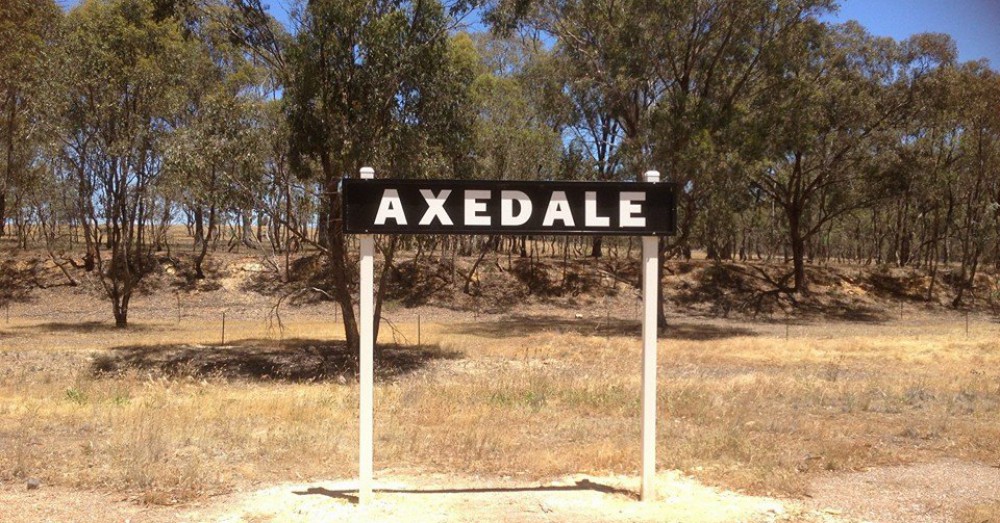The following article was published in the Axedale Antics, in 2011. The Axedale Antics is Axedale’s community newspaper.
Early Settlers: Campaspe Plains Station
Campaspe Plains Station – Charles Hutton
The township of Axedale was originally part of the Campaspe Plains Station. It is interesting to note that the original spelling is different to that used today.
Charles Hutton took up Campaspie Plains in July, 1838, having overlanded, probably from Sydney, with a large party including eight assigned convicts.
Hutton was born in London in 1808, and joined the East India Company, as a cadet in 1825. He was commissioned an ensign in 1826, when stationed in India. In 1937, Hutton took leave and travelled to New South Wales and participated in an exploratory party looking for suitable pastoral country. Hutton resigned from the East India Company in 1839, while still on leave.
Hutton and his party first settled on the upper reaches of the Wild Duck Creek, which he called Vincent Creek. They stayed here for a few months, then moved further down stream.
The original head station was on the west bank of the Wild Duck Creek, which later became known as Langworner.
In theory, the original Campaspie Plains Station was approximately 400,000 acres of grazing land which comprised of the country later taken up by the Axedale, Barnadown, Muskerry, Mt. Pleasant, Majors Line and Mitchells Creek Stations.
Campaspie Plains Massacre
Due to the drought at the time, the sheep had to be spread out over a vast area, in order to obtain enough feed. An outstation hut was established on the Campaspie, where the Barnadown bridge now stands. This was 18 miles from the main station on Wild Duck Creek. Hutton sent two flocks of sheep, two shepherds, and a hut keeper to the new outstation.
Hugh Bryan, a shepherd, and James Neill, a hut keeper were killed in May 1839, at the Barnadown outstation, by Aborigines, possibly as retribution for the earlier Aboriginal deaths.
Mounted police accompanied by Charles Hutton, killed at least five Aboriginals, in what was later described, after an official investigation, as a deliberately planned illegal reprisal.
The body of James Neill was not found in the initial search. However, in 1878, contractors digging a trench, unearthed the body of a European male, one and half miles from where the outstation was situated. Evidence including brass buttons and a buckle and the location of the body indicated to the authorities that it almost certainly was the body of James Neill.
By January 1840, Hutton sold the station to Daniel Jennings and George Playne, for 10,000 pounds, which included 7000 sheep. Hutton moved to Melbourne and married Margaret Smith in 1842. Their first daughter was born the following year. Hutton continued to be involved with pastoral interests, but never lived on any of those properties.
Pastoral Settlement in Northern Victoria, RANDALL J.O.
Axedale Antics, March 2011
©2022 copyright. All rights reserved axedalethenandnow.com
